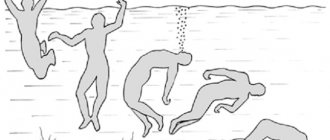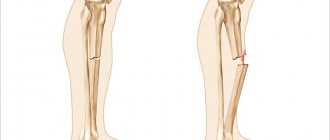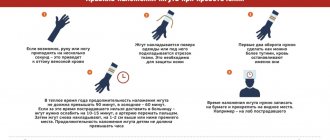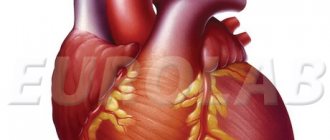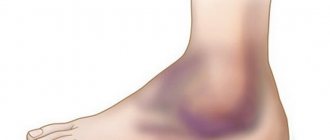First aid for traumatic brain injury
Surgeon E.V. Markevich Surgical department No. 1
It seems to many that little can threaten the human brain, because the brain is perfectly protected by nature, like no other human organ. Let us recall that the human brain is washed by a strictly special liquid, which provides the brain with additional nutrition and serves as a kind of shock absorber.
Our brain is, among other things, covered with several important protective membranes. Well, in the end, the brain is securely closed by the skull. However, sometimes head injuries can result in quite serious problems with the brain.
Literally all traumatic brain injuries are usually divided into two groups. These are open injuries and closed injuries. At the same time, open brain injuries are those injuries in which all the soft tissues of our head can be damaged (both skin and subcutaneous tissue, and various fascia) and of course the bones of the skull.
Closed brain injuries are considered to be injuries that are less dangerous, but nevertheless still extremely unpleasant. Among all existing brain injuries, concussion ranks first in terms of frequency of occurrence.
Main causes of traumatic brain injuries
Any traumatic brain injury, be it a concussion or otherwise, can occur as a result of strong blows, bruises or sudden movements of the head (sudden accelerations or decelerations, for example, during a fall). The main causes of traumatic brain injury are major road traffic accidents, as well as domestic, sports or industrial head injuries.
Traumatic brain injury, which occurs with severe damage to the bones of the skull or intracranial structures, usually occurs as a result of very strong blows to the head. Mostly, such injuries can occur in major accidents, or when hitting the head when falling from a height.
How to recognize a traumatic brain injury
As a rule, recognizing an open head injury is not difficult; it is usually noticeable visually. The situation is somewhat more complicated with cases of closed injuries. The main signs indicating the presence of a dangerous traumatic brain injury may be symptoms consisting of the following dangerous manifestations:
- Manifestations of severe drowsiness in humans.
- Development of general weakness.
- Strong headache.
- A sudden loss of consciousness is possible.
- The appearance of unreasonable dizziness.
- The development of nausea, and even profuse vomiting.
- Amnesia is possible (a condition that erases from a person’s memory those events that provoked the injury itself, or the events preceding it).
In addition, it is important to understand that severe forms of traumatic brain injury usually provoke not only loss of consciousness, but also lack of consciousness for a significant period of time, during which even paralysis may occur.
Principles of first aid for traumatic brain injury
Before providing first aid to victims of traumatic brain injury, one must always take into account the seriousness of the consequences that this may entail. Based on this, first aid for traumatic brain injury must include the following urgent measures:
- It is important to place the victim on his back, and at the same time fully control his general condition (we are talking about monitoring breathing, pulse, etc.).
- Usually, in the absence of consciousness in such victims, they need to be placed only on their side, which can help prevent suffocation from vomit entering directly into the respiratory tract. This position will also help eliminate the possibility of accidental tongue sticking and choking.
- A sterile dressing should be applied directly to the open wound.
- In addition, open head injuries usually require tight wrapping of sterile bandages on all edges of the wound, after which the main bandage may be applied.
The following manifestations of traumatic brain injury are considered strictly mandatory conditions for calling an ambulance as quickly as possible:
- If there is very heavy bleeding from a head wound.
- If there is heavy bleeding from the victim’s ears or nose.
- If the victim has a very severe, frightening headache.
- If the injured person shows no signs of breathing at all.
- When the victim is noticeably confused.
- When complete loss of consciousness occurs and especially for more than a few seconds.
- If there are obvious disturbances in the usual balance.
- If there is severe weakness in the arms or legs, up to the impossibility of moving the limbs.
- If severe convulsions are observed.
- When there is repeated rather profuse vomiting.
- If there is some vagueness in speech.
In addition, calling an ambulance should also become strictly mandatory in cases of receiving any type of open form of traumatic brain injury. Remember, even if the victim’s health seems to be quite good, after providing him with first aid, you should definitely insist that such a person contact a doctor.
What is unacceptable when helping a person with a traumatic brain injury
It is necessary to note several very important points that are categorically unacceptable when providing assistance to victims with traumatic brain injury:
- Allow the victim to take a sitting position.
- Even the slightest lifting or moving the victim from place to place, even if it seems to you that it would be more comfortable for the victim to lie in another place.
- Even the minimum stay of a victim with a traumatic brain injury without outside supervision.
- Eliminating the urgent need for the victim to see a doctor, even if it seems to him that his health is excellent.
Types and symptoms of brain contusion
With this form, damage to the brain substance occurs at the site of the impact, and foci of destructive changes may also be detected in neighboring areas. This injury is often accompanied by hemorrhage, which can lead to coma and death.
Depending on the damage and external manifestations, brain contusion has 3 degrees of severity:
- A mild degree is accompanied by loss of consciousness for up to 1 hour. Moderate headache, dizziness. Vomiting can be repeated up to 2-3 times. There are fluctuations in blood pressure. When superficial vessels rupture, subarachnoid hemorrhage is possible.
- With a moderate injury, a person can remain unconscious for up to 6 hours. Amnesia is definitely present. The victim may not remember past events or recognize his relatives. Frequent and repeated vomiting with severe headache. There is an increase in blood pressure to 180/100 mm Hg. Art. Possible disorders of the cardiovascular system. Also, such an injury can lead to speech impairment, paralysis, and muscle weakness.
- Severe brain contusion is often accompanied by a coma from a couple of days to several months. Disturbances arise from motor and speech functions. Memory and attention are greatly reduced, inhibition or, conversely, motor agitation appears. Full recovery from such an injury is possible only in childhood, since compensatory mechanisms are better developed in children.
A brain contusion, regardless of severity, should not be left without examination and examination by an appropriate specialist. There are often cases when the consequences overtake victims years after the injury, for example, in the form of a stroke. However, this only occurs when appropriate treatment has not been carried out.
Maybe
News
According to medical statistics, traumatic brain injuries occupy the sad first place among all injuries received by people. Unfortunately, they very often cause disability and even death. Moreover, disability can occur even with a mild TBI (about 10%). The average degree leads to disability much more often (about 60%), and severe - in 100% of cases.
Under what circumstances can you get a traumatic brain injury?
The name of this situation (“trauma”) itself suggests that the most common causes are:
- Road accident. Victims may include all road users: drivers of cars and other vehicles, passengers, pedestrians.
- Accidents that occur at work or at home, as well as as a result of a fall on a slippery road (this most often happens to older people in winter).
- The consequences of fights, including while intoxicated, as well as the consequences of illegal actions on the part of criminals.
- Results of collisions, accidents in traumatic sports or extreme recreational activities (football, hockey, motorcycle racing, rugby, alpine skiing, rock climbing, etc.)
What are the severity levels of TBI?
Mild degree: for a relatively harmless head injury resulting in a mild concussion.
Moderate degree: with a more severe head injury, causing a serious concussion and significant deterioration in health.
Severe degree: with a very severe head injury, causing compression of the brain, a sharp deterioration in the victim’s condition, up to an immediate threat to his life.
To determine the severity, doctors use the Glasgow Coma Scale. The patient's condition is assessed depending on speech and motor reactions, the ability to open eyes, and adequately respond to the environment.
What are the types of TBI?
Based on the presence/absence of wounds on the scalp:
- Open TBI (there are wounds).
- Closed TBI (no wounds).
By location of damage:
- Isolated TBI (damage to the head only).
- Combined TBI (not only the skull is damaged, but also other organs and parts of the body).
- Combined TBI (damage caused not only by mechanical impact, but also as a result of radiation, exposure to aggressive chemicals, etc.)
According to the nature of brain damage:
- Shake. Result: short-term deterioration in health, in the most severe cases - short-term loss of consciousness; hospitalization is usually not required; an MRI or CT scan is required.
- Injury. Occurs as a result of an impact of the brain against the wall of the skull. Typically, hospitalization is required.
- Axonal brain damage. Occurs when there is a severe injury, resulting in damage to the processes of nerve cells - axons. Often accompanied by microscopic hemorrhages. Immediate hospitalization is required.
- Squeezing. The most severe form of damage, in which hematomas form in the intracranial space. Emergency surgical assistance is required.
Note: it often happens that damage occurs not only in the area where the blow directly occurred, but also on the opposite side of the skull - the “counter-impact effect.”
Symptoms of TBI resulting in concussion or brain contusion
The diagnosis of “concussion” is made by a doctor based on the results of an examination of the victim and his complaints. If the patient reported that he suffered a head injury, which resulted in a single vomiting, as well as a short-term loss of consciousness, but at the time of examination he adequately reacts to the surrounding reality, his skin is pale, then the doctor diagnoses a concussion. If consciousness has not been lost, then the diagnosis is made as doubtful.
The diagnosis of “mild brain contusion” is made in the presence of the following symptoms: loss of consciousness lasting up to an hour, followed by complaints of severe headache and nausea. There may be repeated vomiting. During the examination, the doctor notices twitching of the victim’s eyes when looking around, and impaired reflexes. Additional studies (X-ray, CT) may show the presence of a fracture of the calvarial bones.
Moderate brain contusion leads to prolonged loss of consciousness (several hours). The victim does not remember what event led to the injury, or the injury itself. Characteristic symptoms: fever, joint and muscle pain, convulsions, speech and vision disturbances. Studies (CT, MRI, X-ray) reveal fractures of the vault or base of the skull.
A severe brain injury causes loss of consciousness for several days (in especially severe cases, up to two weeks). The vital functions of the body become disrupted and change: pulse, respiratory rate, blood pressure, temperature. The victim cannot swallow normally or move his arms and legs. In most cases, this is the result of fractures of the vault and base of the skull, causing intracranial hemorrhage.
How is TBI treated?
The victim needs qualified medical care. Before the ambulance arrives, carefully lay him on his back, and if he is unconscious, on his side (so that he does not choke on vomit if he vomits). If there is damage to the head, apply a sterile bandage. If the wound is open, first cover its edges with bandages and then cover with a bandage.
After the ambulance takes the victim to the hospital, he is transferred to the trauma or intensive care unit. The diagnosis is made after examination by a traumatologist, surgeon and neurosurgeon.
If a hematoma is detected, immediate surgery is necessary. Delaying it dramatically increases the likelihood of death.
In the absence of a hematoma, drug therapy is prescribed (taking antibacterial, painkillers and sedatives). If necessary, drugs that have an anticonvulsant effect, magnesia, and glucocorticoids are added to them.
The prognosis for recovery directly depends not only on the skill of the doctors, but also on the degree of brain contusion and the general condition of the patient’s body. With a mild degree, the vast majority of patients (about 90%) recover completely and can lead a full life. With more severe damage, unfortunately, it often leads to disability.
What are the measures to prevent TBI?
It is necessary to eliminate, if possible, stupid and senseless risks. Of course, this does not mean that you need to be afraid of everything and shut yourself up “within four walls.” But following basic safety rules is not only possible, but also necessary. For example:
- When driving, do not break the rules, do not be distracted, and always monitor the situation on the road.
- Do not violate safety rules at work.
- When engaging in dangerous sports or extreme recreational activities, if possible, use a protective helmet and do not take unnecessary and unjustified risks.
Try, if not completely exclude the possibility of getting a traumatic brain injury (this is hardly possible), then at least reduce it to a minimum.

